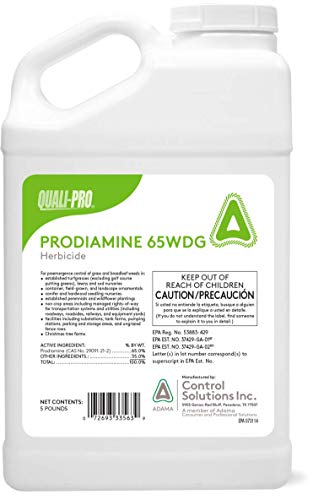The words Bermuda grass and crabgrass are often used interchangeably, and even my neighbor thinks they’re the same type of warm-season grass.
But they are miles apart so much so that crabgrass isn’t classified as a desirable species of grass and is a pesky broadleaf weed.
Bermuda grass vs Crabgrass identification:
- Bermuda grass has fine-textured, narrow leaves, whereas crabgrass leaves have a distinctive folded or V-shaped appearance.
- The color of Bermuda grass can vary, but it is often a medium to dark green and crabgrass leaves are usually pale green to yellowish-green in color.
Keep reading to find out how to tell the difference between Bermuda grass and crabgrass.
Crabgrass vs Bermuda Grass – Key Differences
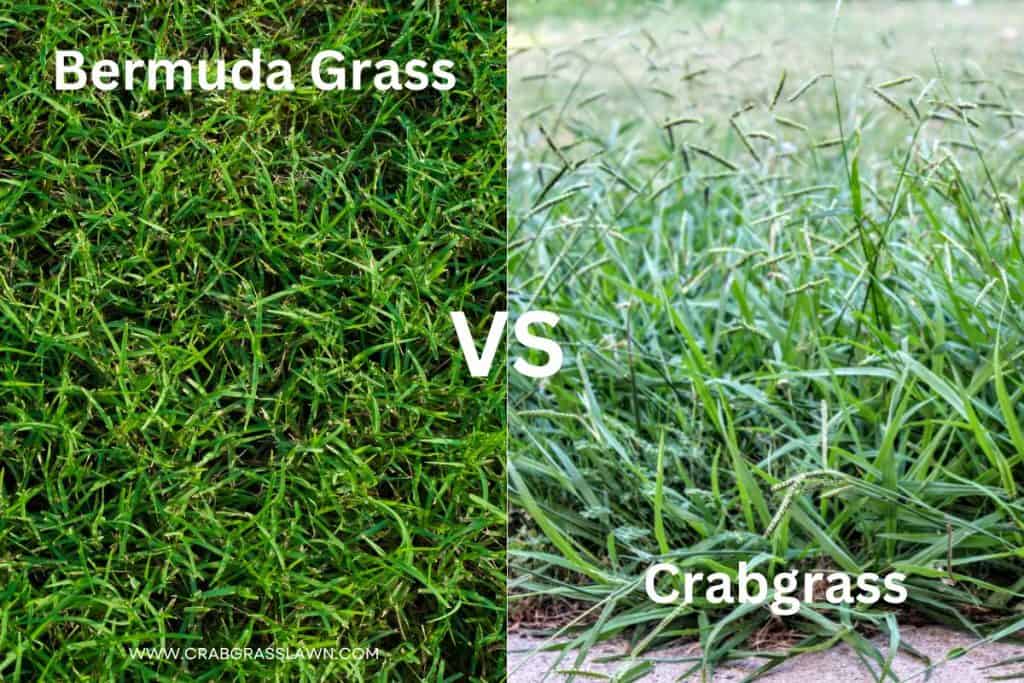
Both Bermuda grass and crabgrass have a fibrous root system and are drought tolerant so they’re very good at handling drought stress and fairly long periods of drought.
Adding to this, Bermuda grass and crabgrass have invasive growth habits and can take over your lawn quickly.
But crabgrass is a few notches ahead because it can thrive even in harsh soil conditions including poor alkaline soil conditions in the spring and summer months.
5 Differences Between Bermuda Grass and Crabgrass
| Bermuda Grass | Crabgrass |
|---|---|
| Makes a desirable turf (grows best in the south but doesn’t tolerate shade) | An unwanted weed the requires weed control (grows well in all climates) |
| Soft blade structure | Course blade structure |
| Only thrives in healthy fertile soils | Flourishes in harsh environments |
| Requires more water to grow quicker and nurture deeper | Roots can dry fast and demand moderate irrigation |
| Broad blades absorb less fertilizer | Fine blades need more fertilizer to thrive |
What is Bermuda grass?
Bermuda grass is a warm-season grass that’s classified as a perennial turfgrass, meaning it is one of the few lawn grasses that comes back year after year when grown under the right conditions. Did you know that Bermudagrass is also sometimes referred to as an invasive weed?
This highly desirable lawn grass is valued for its remarkable heat and drought tolerance, easy maintenance, and ability to withstand heavy traffic and recover quickly.
This combination of qualities is one of the many reasons why many US lawn owners prefer a bermudagrass turf.
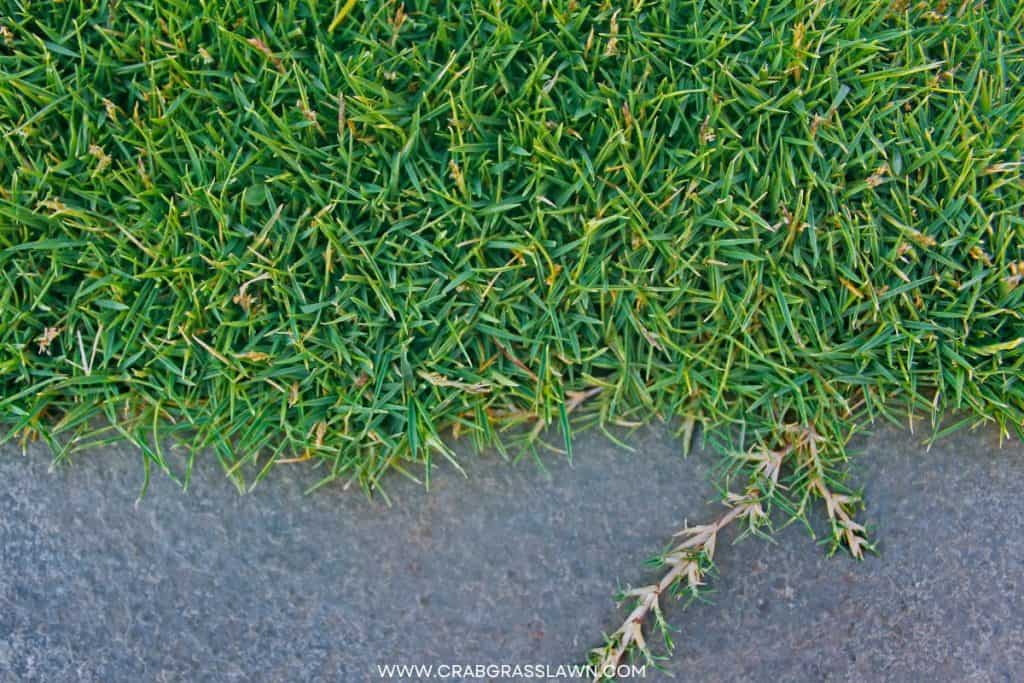
What Does Bermuda Grass Look Like?
Bermuda grass is easy to identify by its coarse texture and above-ground roots known as stolons. Perhaps its most distinguishing characteristic is its seed head, which looks similar to a bird’s foot.
The dark green leaves of Bermuda grass measure between 0.5 inches to as long as 5 inches in height and are typically deep green to dull grey-green.
The telltale signs of Bermuda grass are:
See also my article on the best Bermuda grass seeds and types.
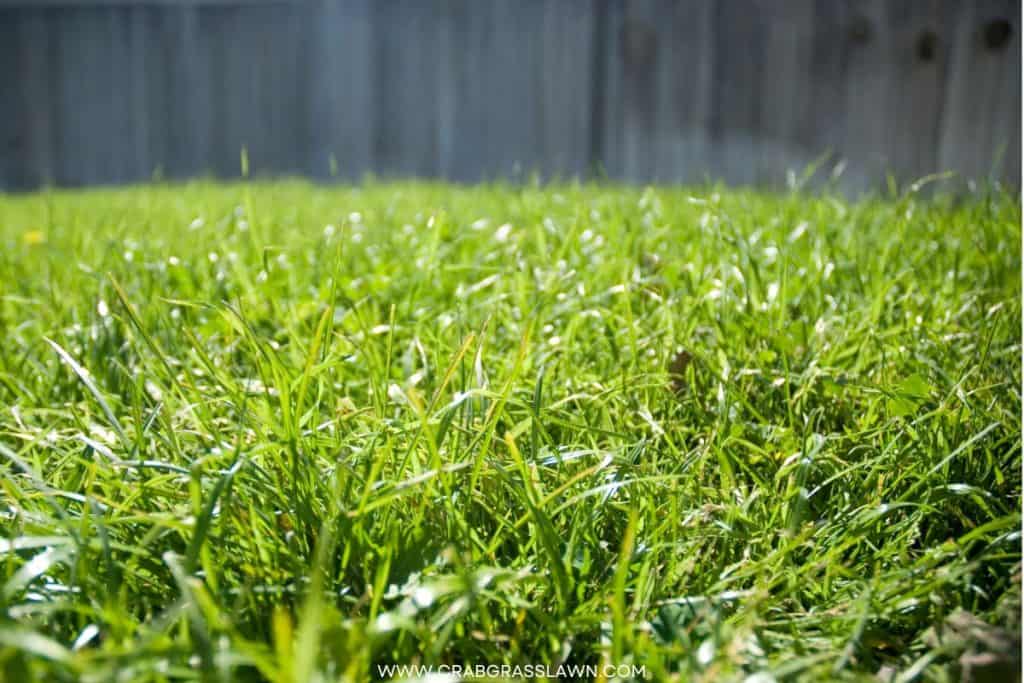
Bermuda Grass Growing Conditions
- Bermuda grass grows well in sandy, well-draining soils, and prefers a soil pH between 6 to 7.5. Other key benefits of well-draining soils you should be aware of.
- With regards to climate, bermudagrass adapts easily to tropical and subtropical climates and grows best under extended periods of high temperatures. However, temperatures above 85 degrees in the summer could affect bermudagrass growth and cause serious stress on the plants.
- Bermuda grass requires adequate moisture for seed germination so watering generously is needed without saturation or soggy soil.
See also my articles on:
Bermuda Grass Maintenance and Treatment
Just like all other types of grass including low-growing annual grass, cool-season lawn grass, perennial grass, and other common lawn grass species, bermudagrass requires regular maintenance for good growth (Bermudagrass maintenance schedule) throughout the season and to retain its rich green color.
Pre-emergent
Bermudagrass requires a pre-emergent herbicide application with a good herbicide product in mid-February to mid-March. It is susceptible to several common weeds including crabgrass, dallisgrass, yellow nutgrass, and annual bluegrass.
Quali-Pro is one of the best pre-emergent herbicides available and is formulated to kill many undesirable weeds like crabgrass and knotweeds.
- PRE-EMERGENT HERBICIDE: Quali-Pro's Prodiamine 65 WDG provides pre-emergent grass and broadleaf weed control. Flexible application allows for both spring and fall use providing season long crabgrass control. Available in a 5 pound bottle.
- FEATURES & BENEFITS: Excellent tank mix partner with fertilizers and iron solutions
- USE SITES: Nurse, Landscape, Turf, Trees, Golf Courses
Affiliate links and images pulled from the Amazon Product Advertising API on: 2025-07-05
Watering
Next, it’s important to irrigate a Bermuda grass lawn at least once a week consistently throughout the year.
Fertilizing
A Bermuda turf should be fertilized in March and August to encourage a thick, dense lawn, and to increase its ability to tolerate stress from heat, diseases, and insect activity.
See also my list of best fertilizers for Bermuda Grass.
Aerating
Aerating a Bermuda lawn in the second half of April after the turf is completely out of dormancy alleviates compaction so air, water, and nutrients can reach the grassroots.
Pest Control
Lastly, apply an insecticide according to the recommended application rates on the product label instructions in the last two weeks of April or the first two weeks of May.
What is Crabgrass?
Crabgrass is one of many invasive weeds that can cause havoc in Bermuda grass and other types of lawns including cool-season turfgrass.
There are several different species of crabgrass, but the two most common in North America are large or hairy crabgrass (Digitaria sanguinalis) and small or smooth crabgrass (Digitaria ischaemum).
Crabgrass generally maintains a low profile on the ground and gets past the mower blades when you mow the grass lawn.

What Does Crabgrass Look Like?
Crabgrass is an annual weed that looks similar to an ocean crab with its many legs (or stems). It has broad blades and produces long flower clusters and thousands of crabgrass seeds every growing season.
Crabgrass is often mistaken for Bermuda grass, owing to its light green color blades that are as thick as a pencil.
The lifecycle of crabgrass plants lasts for approximately a year but can continue to be a problem the following year if it sets seed.
Crabgrass infestations including hairy crabgrass can be tackled with a good crabgrass killer. There are pre-emergent herbicides (crabgrass preventer) and post-emergent herbicides available to eliminate both crabgrass seed heads, leaf-stage crabgrass, and crabgrass deep roots.
Crabgrass Growing Conditions
Crabgrass grows well in poor types of soil including sandy soils and acidic soils, and in hot dry conditions.
This troublesome weed is one of the many aggressive weeds that compete against turfgrass that are under heat stress and isn’t limited to residential turfgrasses but can crop up in lawns, golf courses, athletic fields, gardens, and orchards.
How to Identify Crabgrass?
Crabgrass can be easily identified in lawns with its course textured yellowish-green grass blades that are conspicuous when found growing among healthy fine textured, dark green grass blades.
Crabgrass is a purpose weed, meaning an opportunistic weed that will thrive in any area that has bare soil and receives sunlight in a beautiful lawn.
This annoying weed often occurs around the edges of the driveway, sidewalk, and tree lawn, and loves salt.
How to Prevent Crabgrass in Bermuda Grass Turf?
The best way to keep crabgrass from calling your bermudagrass turf home is by getting ahead and killing it before it sprouts with pre-emergent broadleaf herbicides.
A pre-emergent herbicide must be applied according to the herbicide rates suggested on the product label and in late winter or during the early spring of the next year.
Applying a pre-emergent during this period will prevent any remaining crabgrass seeds from developing at the next opportunity.
PRO TIP
Take note that pre-emergent herbicide failure will occur if you apply the product without following the single application rate and if crabgrass is already in the lawn.
It’s a good lawn care practice to make pre-emergent and post-emergent applications part of your regular maintenance schedule to effectively control aggressive growers like crabgrass seeds and plants.
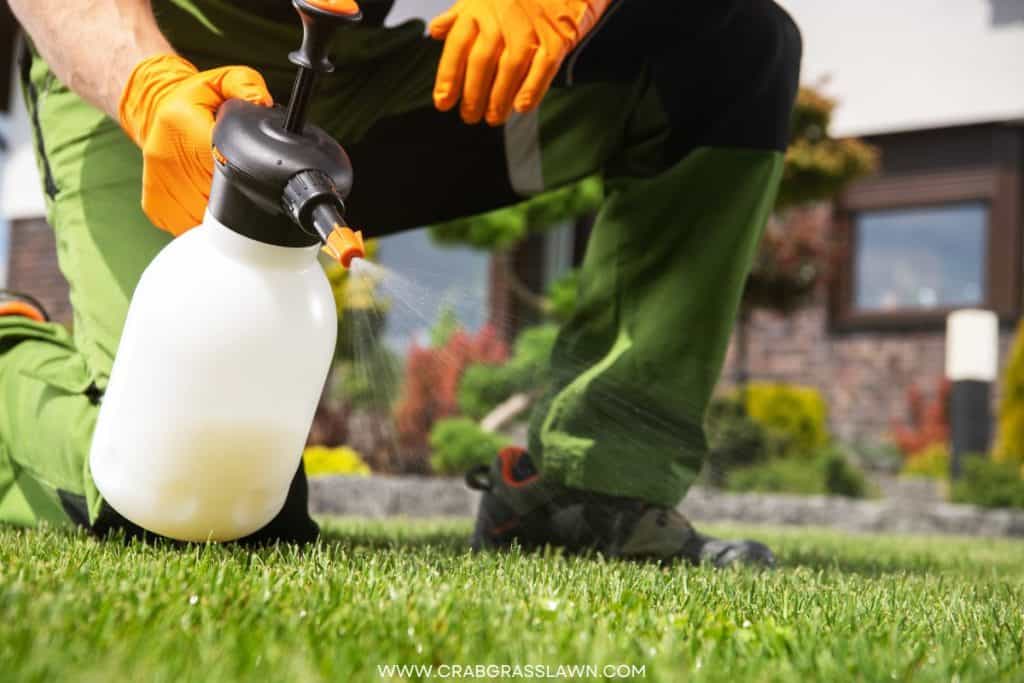
FAQs
Q: What is Better than Bermuda grass
A: The answer depends on the zone you live in. Bermuda grass is a great choice for zones 7, 8, 9, and 10, and St. Augustine’s only performs well in certain zones including zones 8, 9, and 10.
Q: How Can You Tell the Difference Between Crabgrass
A: Certain telltale signs can help you differentiate between crabgrass and other weed grasses. Knowing the difference will help you determine the best crabgrass prevention techniques and the best weed killers to use.
Crabgrass is one of the few weed grass types that grows near the edges of a lawn and has leaf blades closer to the ground.
Q: Will Bermuda grass Overtake Weeds
A: Bermudagrass is an aggressive plant and this growth habit can choke out weeds.
Q: Can You Mow Bermuda grass Often?
A: Bermudagrass is an aggressive grower and as such should be mowed frequently to prevent it from growing out of control. See also my review of the best mowers for Bermuda grass.
Q: What is the Fastest Way of Getting Rid of Crabgrass?
A: The best way to kill crabgrass is with a pre-emergent herbicide. You can apply a pre-emergent weed killer in your lawn and flower beds in the spring before the crabgrass seeds sprout.
Final Thoughts
Bermuda grass and crabgrass are two considerably different types of plants, where the former is welcomed as an ideal summer season grass for lawns and turfs and the latter is billed as a pesky weed that you need to eliminate to keep your lawn healthy.
Hi, Alex Kuritz here. Growing up I remember that my family had one of the best lawns in the neighborhood. Richly green and lush. I did a lot as I grew up in terms of caring and tending for not only my family’s lawn but also my neighbors. I can say I have years of experience, and I am here to share it with you.
